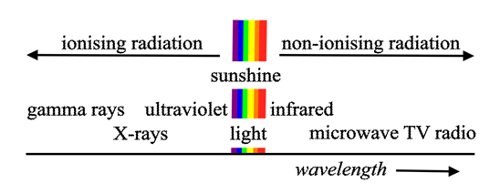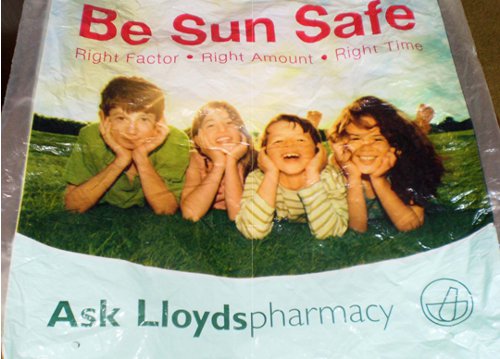In the right hand diagram above are four scientists who command public confidence.
Marie Curie, physicist, chemist, pioneer radiologist, who wrote Nothing in life is to be feared, it is to be understood.
Charles Darwin, pioneer naturalist, geologist, student of divinity, who also witnessed and described the major Chilean earthquake and tsunami of 1835.
Florence Nightingale, nursing pioneer and early statistician, who wrote How very little can be done under the spirit of fear.
Adam Smith, economics pioneer and philosopher, who wrote Science is the great antidote to the poison of enthusiasm and superstition.
Their example shows how study, personal experiences of life, common sense and fearlessness can be used to build trust and confidence. They were all remarkably broad in their skills and would not have seen themselves as narrow experts of the kind sought out by today's press for an instantly quotable opinion.
Advertisement
Personal confidence comes slowly with familiarity, education and thinking matters through. In Japan everyone knows what to do in the event of an earthquake and tsunami – they learn it at school from a young age. On 11 March they did not wait for orders from above – they put into action what they had learnt. So that, although there were 500,000 people in the area subsequently inundated, all but 18,800 reached safety. This was a real achievement in contrast to the reaction to the arrival of radioactivity. The public had understood that nothing should go wrong with nuclear – absolute safety was assured. So when it seemed that the impossible had happened, there was panic. Reference to higher authority evoked political reaction rather than scientific guidance. Heightened fear encouraged talk of absolute safety – but that is impossible because nature always has the ability to overpower by force majeure. Then after more than two and a half years the disarray continues and the accident is still referred to as a radiation disaster although there have been no casualties at all. But you cannot have Hamlet without bodies!
Understanding radioactivity is not difficult and with a little instruction most high school students could calculate the following by multiplying three or four simple numbers:
Anyone would have to eat more than five tonnes of food described as contaminated [100 Bq per kg, as at April 2012] over a period of three months to get a dose as large as one whole body CT scan – and that is quite harmless. Condemning such food is ridiculous because eating so much is impossible, and so the regulation is a waste of time and money.
In April 2011 TEPCO announced that it had intentionally discharged into the ocean 11,500 tons of water contaminated by 10,000 Bq per litre and it said that this was both 100 times the regulation level [100 Bq per litre, at that time] and also perfectly safe. This sounds contradictory but both statements are true! Calculation shows that drinking nothing but this water for three months would give the same dose as two CT scans.
In addition the extra CO2 emission and cost of closing the power plants have had a serious effect on the atmosphere and the economy. These are caused solely by political fear, and that continues, it seems.
Familiar radiation

The radiation spectrum
In fact everyone experiences such radiation – it is found in more familiar contexts than nuclear power. The diagram above shows the spectrum of radiation with the rainbow of light radiation at the centre. To the right there is non-ionising radiation - the only effect this has on living tissue is to heat it, and you can feel that long before it does any harm. To the left is ionising radiation that can break molecules apart, including the sensitive biological ones like DNA. First there is ultraviolet (UV) and then X-rays and gamma rays. The main difference between them is that X-rays and gamma rays penetrate the skin while UV does not.
Advertisement
Sunshine includes important amounts of UV as well light and heat radiation in the infra red. Like all forms of ionising radiation sunshine can kill living cells in the short term and may result in cancer later in life. We learn to enjoy the benefits of the sun and take care to avoid sunburn and skin cancer - and we teach children about it too. Simple advice to the family may come from a doctor or a neighbourhood pharmacy as shown on the plastic carrier bag illustrated below. It is true that all risk might be avoided by taking summer vacations in a dark hole in the ground, only emerging by starlight, but such vacations are not popular. An international committee on sun bathing set up under the United Nations would be ignored by most people. Gamma rays and X-rays - call it nuclear radiation - are no different from UV in principle. The burns and cancer that they cause may be deeper in the body but skin cancer is no less dangerous. So the cry it's nuclear! is purely cultural, with no scientific basis.

Living, loving and laughing with UV radiation -- a shopping bag with sensible advice about radiation for families
This is the first in a two part series on the risks and benefits of nuclear power. The second can be read by clicking here.
The author is a member of the SARI group, Scientists for Accurate Radiation Information http://radiationeffects.org/ This article is based on an invited lecture given at the Second AGORA Conference, Tokyo. and at the British Chamber of Commerce in Japan, 8 and 9 Dec. 2013. A more extended discussion with references may be found in the book Radiation and Reason available from http://www.radiationandreason.com together with other recent articles in Kindle, ePub, Japanese and Chinese editions, also available from Amazon.
Discuss in our Forums
See what other readers are saying about this article!
Click here to read & post comments.
13 posts so far.